The aroma of coffee wafting through the air—when did this change the course of history?
During the Ottoman Empire, coffeehouses emerged as more than mere places to drink coffee.
They became cultural hubs, hosting political debates, poetry readings, and gatherings of artists, serving as bridges that connected people.
Let’s explore the beginnings of this grand story and uncover how coffeehouses became central to society at that time.
- The historical significance and origins of coffeehouses
- The coffee varieties and characteristics that supported coffeehouse culture
- The role and spread of coffee in the Ottoman Empire
- The enduring charm of Ottoman-style coffeehouses in the modern era
- The Historical Background of Coffee’s Arrival in the Ottoman Empire
- The Birth of the World’s First Coffeehouses and Their Role
- The Expansion of Coffee Culture by the Ottoman Empire
- The Evolution of Coffeehouse Culture in Modern Turkey
- The Timeless Charm of Ottoman Coffeehouse Culture
The Historical Background of Coffee’s Arrival in the Ottoman Empire
Coffee was introduced to the Ottoman Empire around the mid-16th century.
Discovered in the highlands of Ethiopia, it traveled through the Arabian Peninsula and eventually reached Istanbul, the heart of the Ottoman Empire.
The spread of coffee was influenced by religious purposes, the development of trade routes, and cultural exchanges.
Here, we explore how coffee became an integral part of Ottoman culture.
Coffee’s Journey from Ethiopia
Ethiopia is widely recognized as the birthplace of coffee.
In its highland regions, coffee plants have grown naturally for centuries.
The legend of Kaldi, a goat herder who noticed his goats becoming lively after eating red coffee cherries, is one of the earliest tales about coffee’s discovery.
This observation marked the beginning of coffee consumption in Ethiopia.
The Role of Sufi Orders in Coffee’s Spread
Coffee traveled from Ethiopia to the Arabian Peninsula and found a significant role among Sufi orders.
It was consumed during night prayers and meditation to help prevent drowsiness.
By associating coffee with religious rituals, it gained a sacred status.
This connection spurred coffee’s widespread popularity across Islamic societies.

Yemen’s Key Contribution
Within the Arabian Peninsula, Yemen emerged as a pivotal hub for coffee culture.
Between the 15th and 16th centuries, the port city of Mocha became a major export center for coffee.
The “Mocha Coffee” produced here earned a global reputation for its exceptional quality.
The Prosperity of Mocha Port
Mocha port flourished as a vital trade center for coffee exports.
Merchants and travelers gathered at the port to trade coffee, making it a bustling hub of commerce.
A significant portion of the coffee exported from Mocha was destined for the Ottoman Empire.
As a result, the name Mocha became synonymous with coffee worldwide.
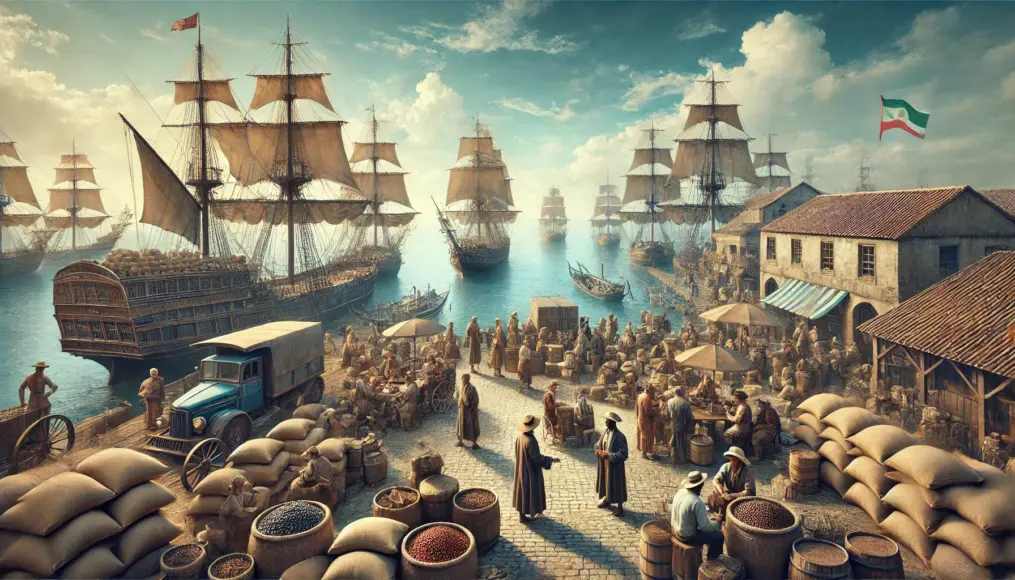
The Ottoman Empire’s Embrace of Coffee Culture
The Ottoman Empire adopted coffee through its expansive trade networks and cultural exchanges.
Coffee transported via Egypt and Syria to Istanbul became highly popular throughout the empire.
Thus, coffee became deeply ingrained in Ottoman society and culture.
Coffee’s Status in the Ottoman Court
Coffee held a prominent role in the Ottoman court.
Specially trained “coffee artisans” served in the palace to prepare high-quality coffee for the emperor and nobility.
These artisans played a crucial role in preparing and presenting coffee during diplomatic and social gatherings.
Coffee became a symbol of prestige and status within the empire.

The Birth of the World’s First Coffeehouses and Their Role
Coffeehouses symbolize the rich coffee culture of the Ottoman Empire.
Their history dates back to the mid-16th century when the first coffeehouse opened in Istanbul.
Far from being just a place to drink coffee, these establishments became cultural hubs for intellectuals and merchants.
This section explores how coffeehouses came into existence and the roles they played in shaping society.
The Historical Background of the First Coffeehouses
The origins of Ottoman coffeehouses can be traced back to mid-16th century Istanbul.
The first coffeehouses, established in Aleppo, Syria, and Istanbul, were not merely places for drinking coffee.
They served as cultural hubs where people gathered to exchange information and engage in discussions.
It’s fascinating to note that such public spaces existed even before coffee spread across Europe.
The Early Coffeehouses in Istanbul
The first coffeehouses in Istanbul were established by local merchants.
Their primary purpose was to provide a venue for exchanging business and trade information.
As a result, coffeehouses became crucial meeting points for merchants and travelers alike.
This highlights how coffee was valued not only as a commodity but also as a means of fostering interaction.
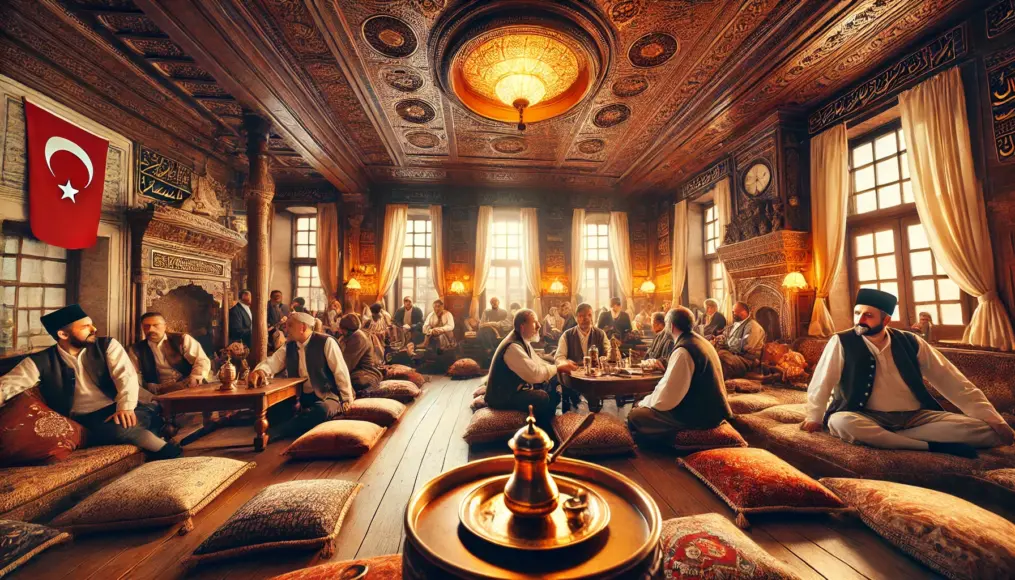
Coffeehouse Culture in Aleppo, Syria
Aleppo in Syria, alongside Istanbul, was a key center of early coffeehouse culture.
Here, coffeehouses served as venues for local cultural events and traditional arts.
Music and poetry readings were often held, accompanied by coffee, fostering deeper connections among participants.
The role of these venues in spreading coffee culture cannot be overstated.
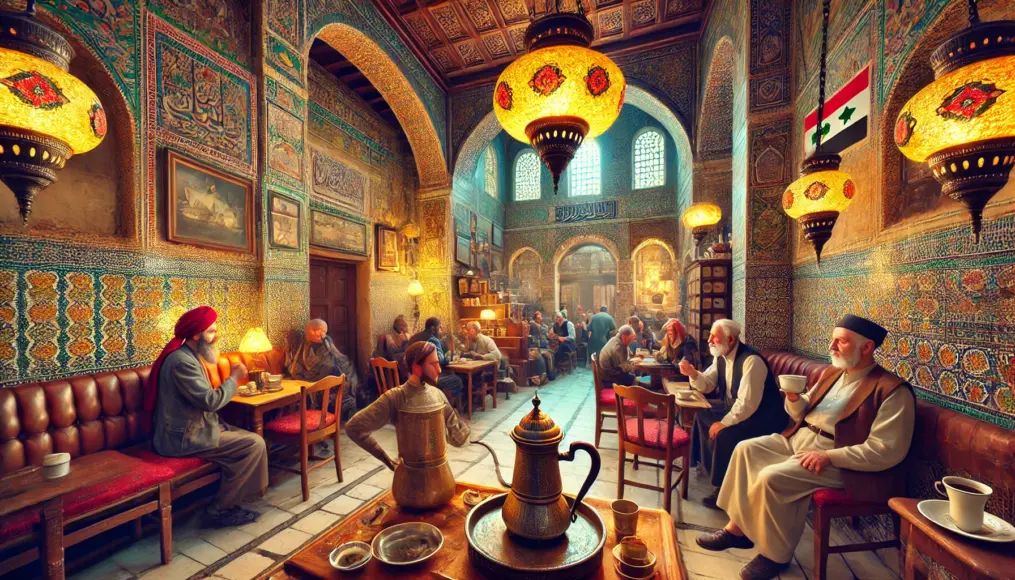
The Purpose of Coffeehouses
In the Ottoman era, coffeehouses were frequented by scholars, merchants, travelers, and locals.
These venues hosted poetry readings, musical performances, and philosophical debates.
Additionally, they became political hubs where government policies and current events were discussed.
This is why coffeehouses earned a reputation as gathering places for intellectuals.
Gathering Places for Intellectuals and Artists
Coffeehouses provided intellectuals and cultural figures a significant platform to share ideas.
For poets and philosophers, it was an opportunity to introduce new works and thoughts.
Such exchanges contributed greatly to cultural evolution and knowledge sharing.
Coffee became a symbolic beverage that supported these activities.
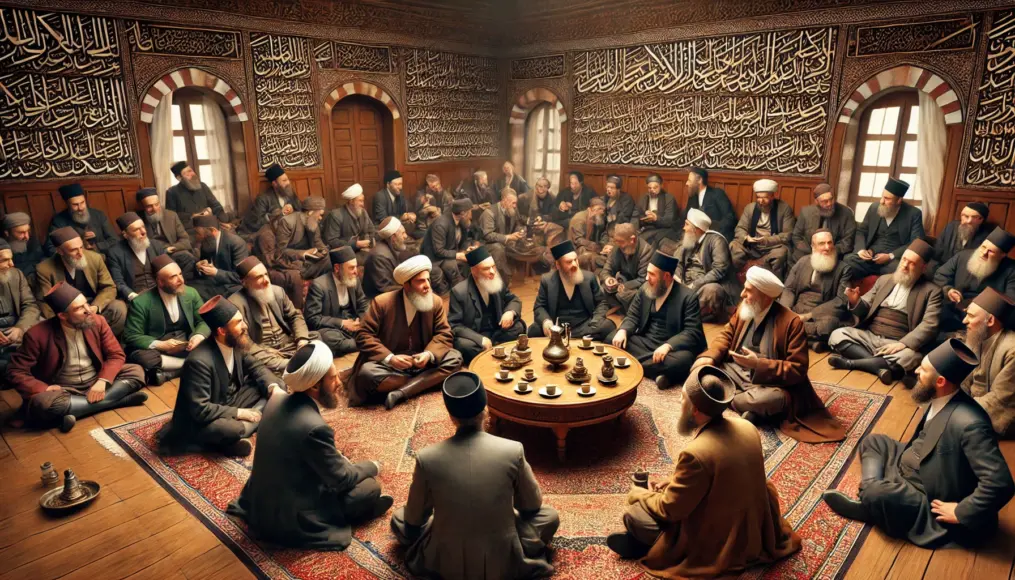
Centers for Political Debate
On the other hand, coffeehouses also served as arenas for political discussions.
Here, policies and current issues were debated, with bold opinions often being shared.
As platforms for free speech, they are sometimes regarded as precursors to modern democracy.
Because of this, coffeehouses were occasionally targeted for closure by authorities.
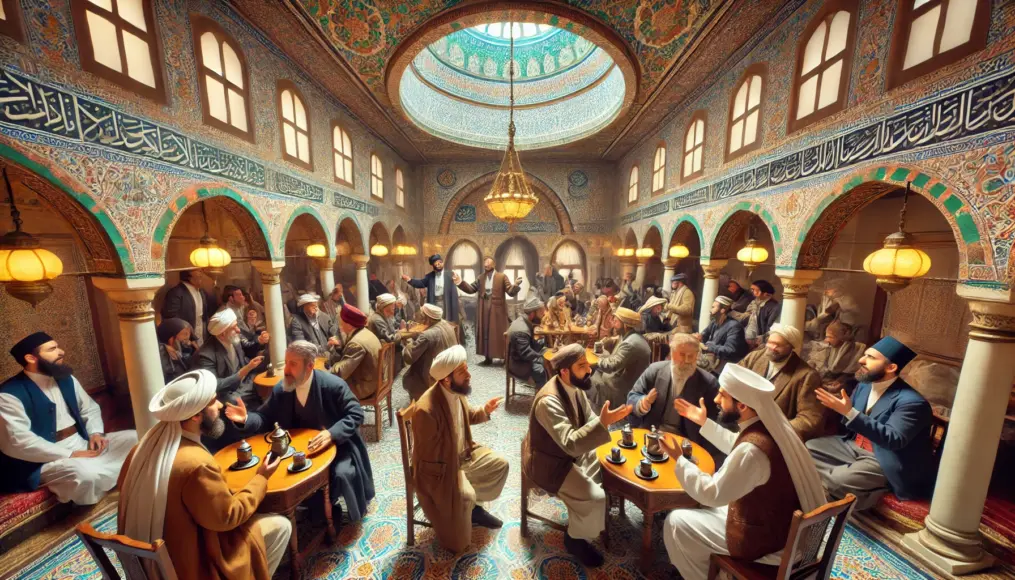
Venues for Entertainment and Relaxation
Coffeehouses were not only places for learning and debate but also spaces for entertainment and relaxation.
While card games and chess were popular, traditional music often provided the backdrop.
As a result, these venues were welcoming to a wide range of visitors.
This diversity further enhanced the charm of coffeehouse culture.
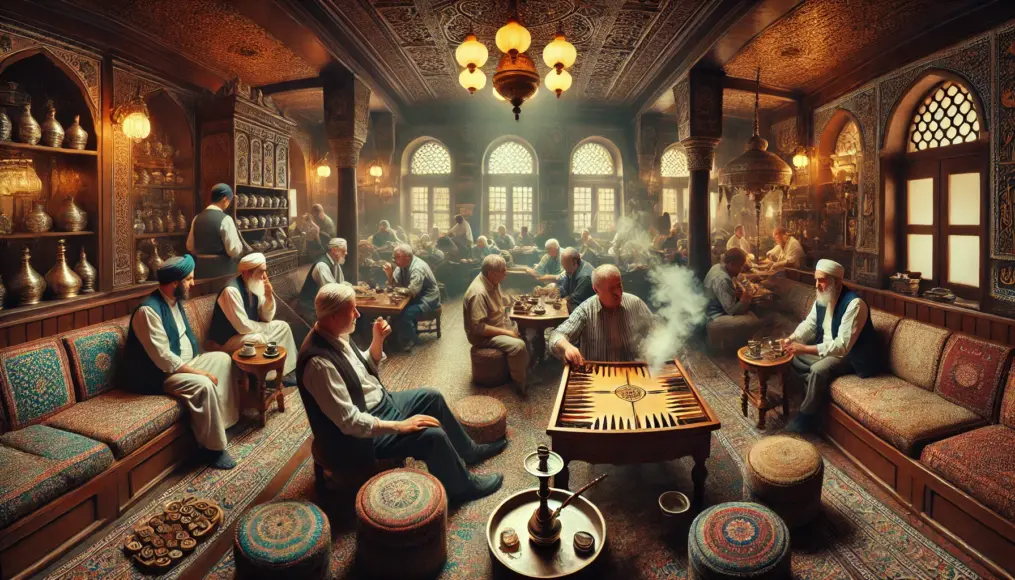
The Expansion of Coffee Culture by the Ottoman Empire
The Ottoman Empire played a critical role in spreading coffee culture across Europe, the Middle East, and North Africa.
Particularly, Istanbul, the empire’s capital, served as the hub for coffee trade, cultural exchange, and innovation.
The culture formed here significantly influenced how coffee was consumed and how coffeehouses became social hubs.
The expansion of coffee culture by the Ottoman Empire laid the foundation for global coffee consumption.
The Spread of Coffee Culture to Europe
The influence of the Ottoman Empire became the catalyst for coffee culture to spread across Europe.
Especially through Venice, coffee entered Italy and rapidly disseminated throughout the continent.
In Europe, coffeehouses became venues for political, cultural, and philosophical discussions, playing a vital role during the Enlightenment.
Venetian Trade and Coffee Dissemination
Venice directly imported coffee from the Ottoman Empire and distributed it across Italy.
Capitalizing on its status as a trade hub, Venice became the center for exporting coffee to the rest of Europe.
Through this process, Venice emerged as a major coffee trading center and the starting point of European coffee culture.
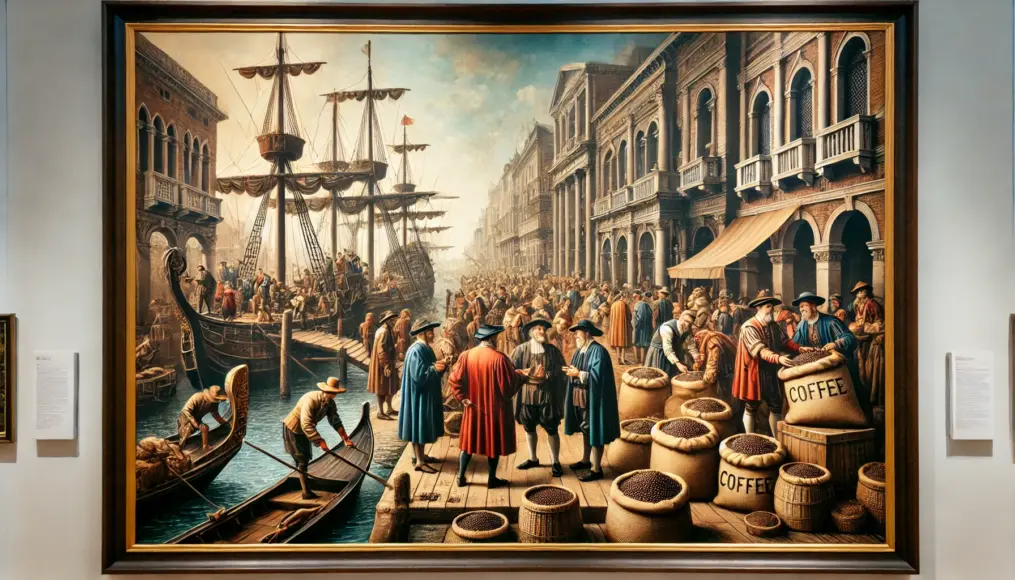
Coffeehouses During the Enlightenment
In Europe, coffeehouses, influenced by the Ottoman Empire, became social hubs for intellectuals and politicians.
These venues provided a space for sharing newspapers and pamphlets and fostering free exchanges of ideas.
This culture spread rapidly, particularly in France and Britain, significantly contributing to the formation of modern society.

New Coffee Cultures in Europe
In Europe, coffee preparation and consumption styles evolved uniquely from the Ottoman influence.
French café culture and Italian espresso culture established distinct styles that built upon Ottoman traditions.

Coffee Culture in the Middle East and North Africa
Coffee rapidly spread throughout the Ottoman Empire’s territories in the Middle East and North Africa.
In these regions, coffee was widely embraced as a daily necessity, part of religious rituals, and a social staple.
Especially in the Middle East, coffeehouses became crucial social spaces, fostering cultural exchanges.
Coffee and Religion in the Middle East
In the Middle East, coffee was often tied to religious rituals and daily prayers.
Particularly in Islamic culture, coffee served as a means of spiritual cleansing and refreshment.

Coffeehouse Culture in North Africa
In North Africa, under Ottoman influence, coffeehouses evolved alongside music and dance to create unique cultural spaces.
These coffeehouses served as venues for entertainment and social gatherings for locals.
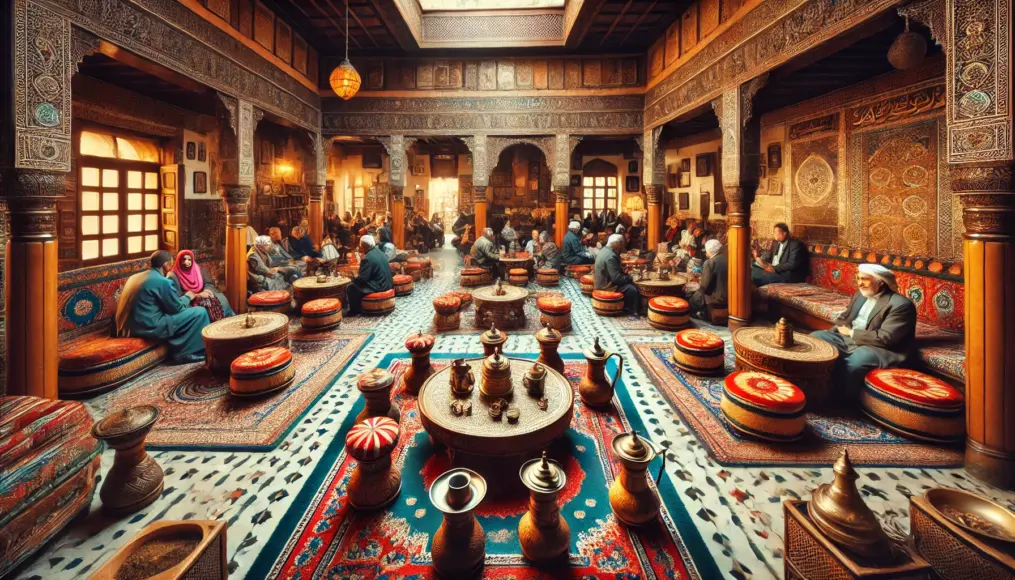
Formation of Unique Coffee Cultures in the Middle East and North Africa
In these regions, coffee became deeply integrated into daily life, fostering distinct customs and preparation methods.
Coffee beans from Ethiopia and Yemen were particularly prominent, shaping unique regional flavors.
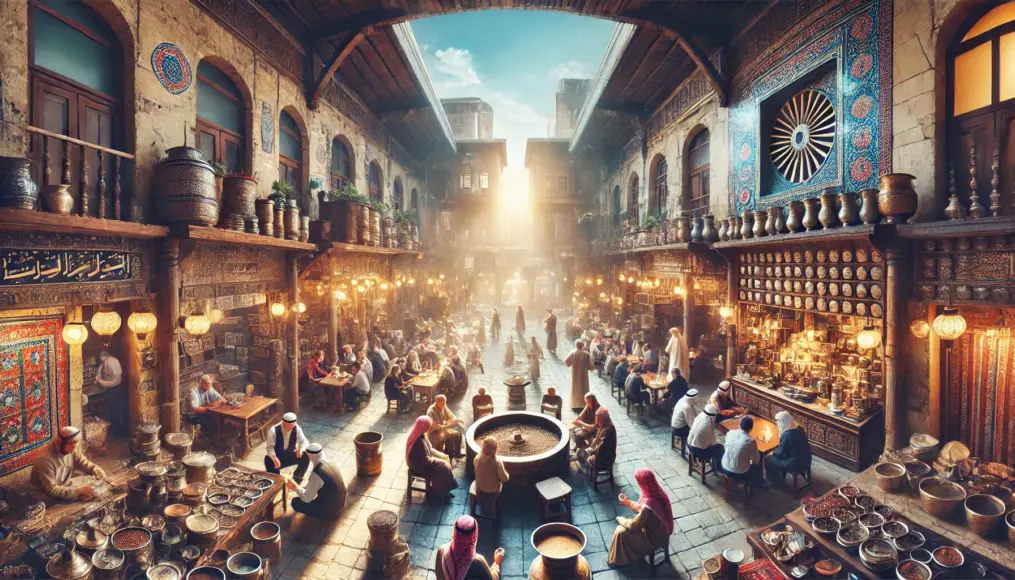
The Evolution of Coffeehouse Culture in Modern Turkey
Turkey, as the birthplace of coffee culture, has continuously preserved its historical heritage and traditions.
At the same time, a fusion with modern culture and lifestyles has led coffeehouses to evolve into new forms.
In Turkish cities, you can find both traditional Turkish coffee shops and sophisticated modern cafes.
This cultural diversity vividly reflects the richness of Turkey’s coffee heritage.
The Role of Traditional Turkish Coffee
Turkish coffee, prepared using a special pot called a “cezve,” is known for its rich aroma and intense flavor.
This style of coffee is loved not only in Turkey but worldwide.
It plays a significant role in deepening bonds among family and friends and is an essential element of ceremonies and weddings.
Recognized as a UNESCO Intangible Cultural Heritage, its cultural importance is highly valued.
How Turkish Coffee is Made
Turkish coffee is made by slowly boiling finely ground coffee, water, and sugar in a cezve over low heat.
The foam that forms during the brewing process is considered a mark of quality, and careful pouring is an essential skill.
A cup of Turkish coffee, with its robust taste, brings comfort and delight to those who enjoy it.

The Tradition of Coffee Fortune Telling
In Turkey, after finishing a cup of coffee, people often engage in “coffee fortune telling” using the grounds left in the cup.
This tradition is a fun and entertaining way to enhance conversations with friends and family.
It represents one of the many rituals that highlight cultural connections through coffee.
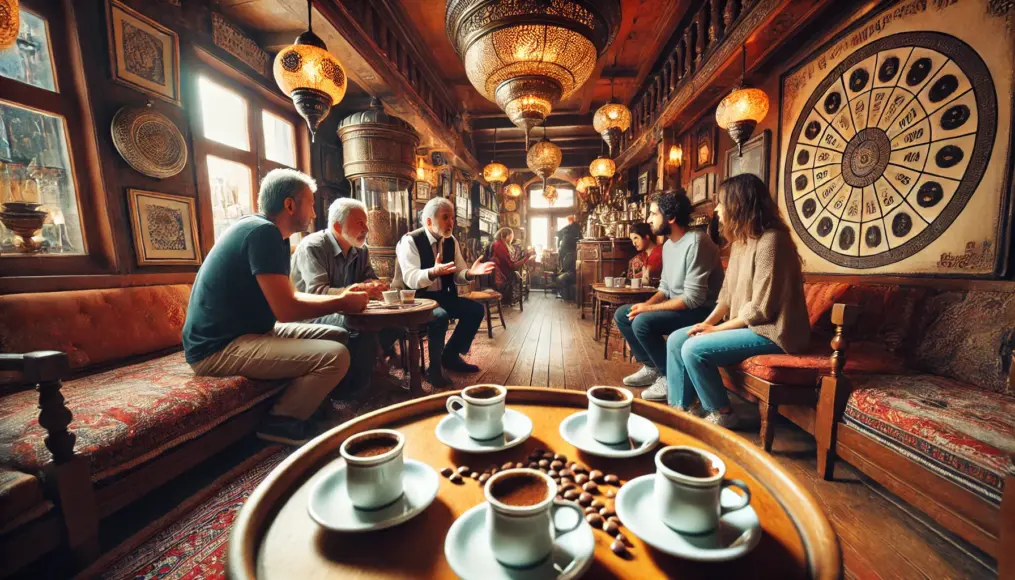
The Rise of Modern Coffeehouses
In modern Turkey, not only traditional cafes but also European- and American-style modern coffeehouses are booming.
These establishments serve espresso, cappuccino, lattes, and other beverages, appealing to a broad audience.
Equipped with Wi-Fi and stylish interiors, they are popular spaces for work, study, and reading.
This evolution has transformed coffeehouses from mere dining spots into hubs for information exchange and idea sharing.
Turkish Youth and Cafe Culture
With the rise of social media, Turkish youth are actively sharing the modern cafe culture.
They post photos taken in cafes and explore new menus and coffee trends.
Such activities enrich Turkish coffee culture and contribute to its global promotion.

Freelancers and Cafe Spaces
As the demand for freelancing and remote work grows, cafes offer convenient working environments.
Modern Turkish cafes are equipped with comfortable seating and charging facilities, attracting creators and entrepreneurs.
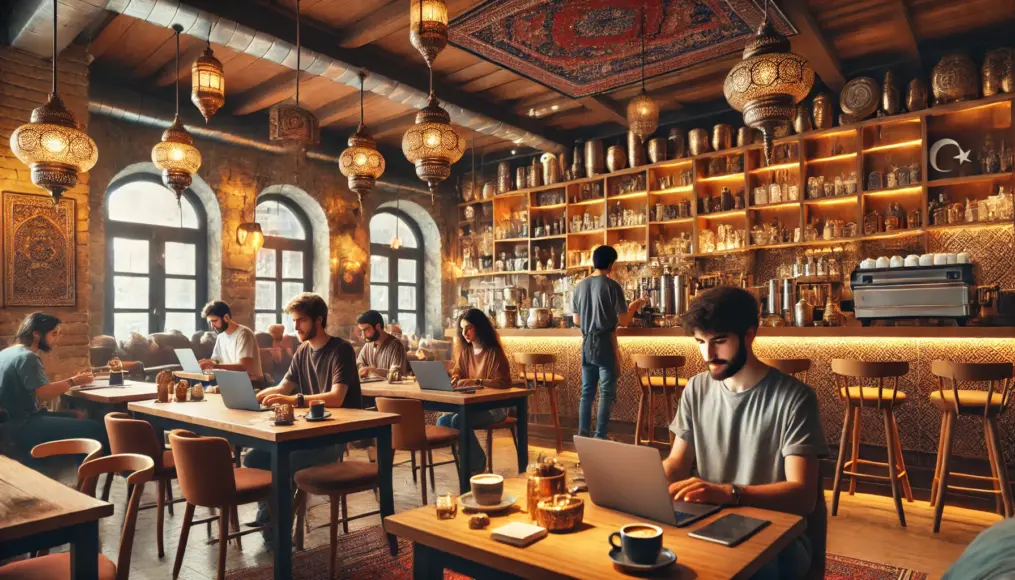
Tourism and Coffee Culture
In Turkey, coffee culture is incorporated into tourism, offering various events and tours to experience it firsthand.
Popular activities include workshops on traditional Turkish coffee preparation and tours highlighting regional coffee traditions.
These initiatives provide visitors with an excellent opportunity to deeply understand Turkish culture.
Coffeehouse Tours in Turkey
Tourists can enjoy guided tours of historical coffeehouses across Turkey.
Experiencing diverse traditions and flavors in each location makes these tours unforgettable for coffee enthusiasts.
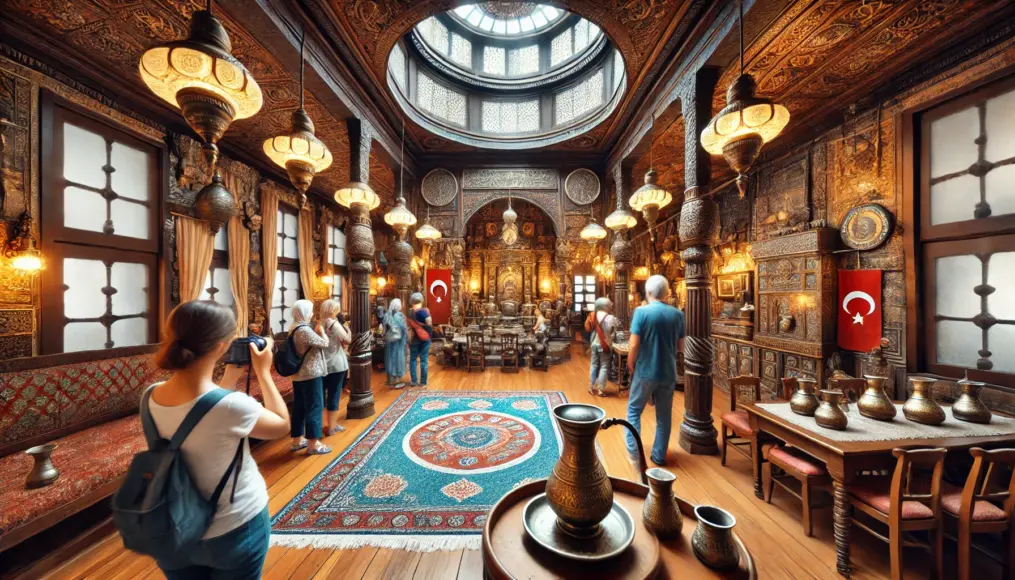
Promoting Turkish Coffee Worldwide
Efforts to promote Turkish coffee are also gaining momentum through government and private initiatives.
Events and exhibitions abroad, inspired by the UNESCO heritage registration, highlight the unique charm of Turkish coffee.
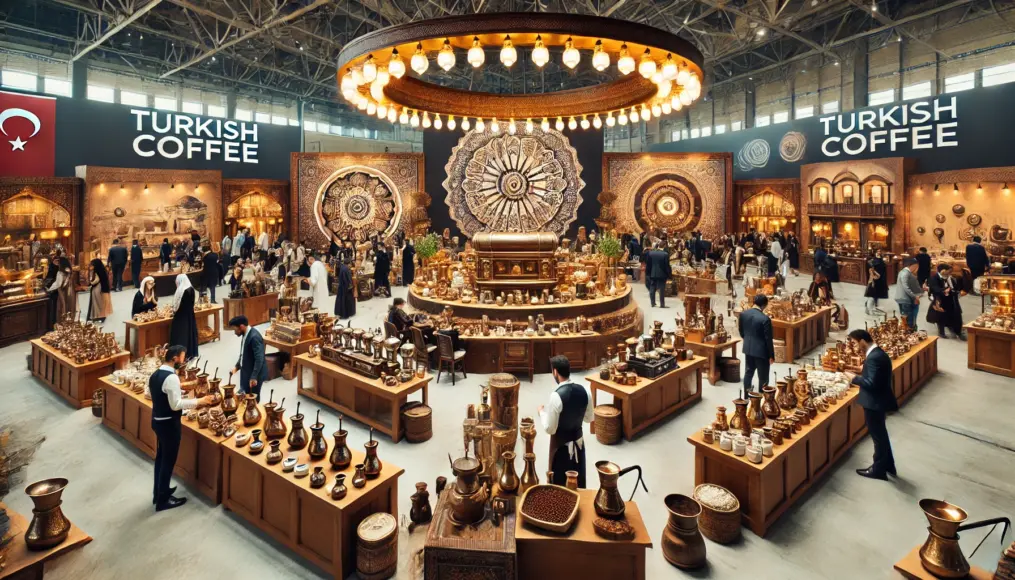
The Timeless Charm of Ottoman Coffeehouse Culture
The coffeehouses introduced during the Ottoman Empire were more than just places to enjoy a drink.
They served as vital community spaces where people gathered, exchanged ideas, and shared cultural experiences.
Turkish coffee culture, born from this innovation, laid the foundation for today’s global café culture with its richness and diversity.
The allure of traditional Turkish coffeehouses lies in their historic atmosphere and the rich coffee experiences they continue to offer.
Why not immerse yourself in this captivating culture and explore its significance firsthand?
We’d love to hear your thoughts or stories about cafés you’ve visited.
Share your coffee experiences in the comments below and connect with fellow coffee enthusiasts!














































































Comment